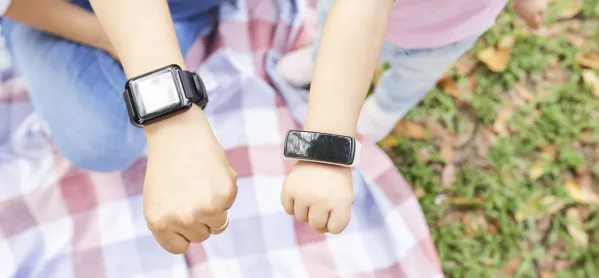- Home
- ‘Surveillance parenting’ is here - what can schools do?
‘Surveillance parenting’ is here - what can schools do?

We’re a month into term and the four-year-old Reception girl has started catching the school bus for the first time.
She enters the building in her shiny new school uniform weighed down by her oversized backpack, touches the device on her wrist and says, “Mummy, I’m at school.” “I know, dear - have a very good day,” comes the reply.
Welcome to the next chapter of helicopter parenting.
Parents here in Hong Kong are turning to technology so that not only are they able to check that their children have made it safely to school, but they are also able to communicate with them throughout the day.
To some extent, we should not be surprised.
This latest trend just fills the gap between the video baby monitors, which allow parents to keep an eye on their sleeping children whilst catching up on their latest box set, and parents tracking their teenagers on their smartphone using the “My family” settings.
Children’s GPS trackers
There is a range of wearable devices designed for children on the market, but, essentially, they are all simplified smartphones with a GPS tracker as part of their functionality.
The devices are lightweight and are designed to connect with the parent’s smartphone and allow parents to track their children in real-time. Depending on the model, other features are also available:
- Two-way communication - Parent and child can contact each other at the press of a button.
- Alerts and notifications - Child GPS tracking devices come with different alert and notification settings. Parents can choose whether they want location updates every five minutes or every 10 seconds…
- Panic button - A child who is lost or scared can simply press the panic button and the device will contact the parent or other designated adult.
- Geofencing - Some products can be set to alert the parent if their child enters or leaves the pre-set boundary.
A justifiable use
Much of this may be highly useful in everyday life, of course.
After all, losing a child at the beach or in a large crowd at a parade or a festival is every parent’s nightmare, so a simple device worn on the wrist could go a long way to avoiding the trauma and angst for child and parent alike.
However, a crowded beach or a festival is a very different context to the one where the child is put on a school bus that delivers her to the gate or is on a play-date at a friend’s house.
So, does this new trend cross the line?
Always-on parenting?
Ultimately, one shared aim of both parenting and schooling is to bring a child to independence.
Together we are trying to equip the children and young people in our care with the social skills that will take them into adult life. But these devices raise a number of questions about how adults manage that process.
It was much simpler when I was growing up 40-plus years ago. It was an age when my friends and I would head off out for the day on a bike ride with a packed lunch, a puncture repair kit and a 2p piece (to make an emergency telephone call from a red telephone box).
Those times when we were “off-radar” were the most formative. That was when we got ourselves into scrapes, found ways to interact with each other away from the intervention of an adult, and learned to take responsibility for ourselves.
Perhaps the greatest danger here is that children and young people are not going to have the important opportunities to make mistakes, to learn to manage their own risks and find their own way towards independence without a parent swooping down to carry them off to safety - just as it was getting interesting.
Parental wellbeing
My concerns here are not just for children either. These innovations will have a significant impact on parents
It is hard enough for parents to cut the apron strings as it is without having the ability to remotely monitor their offspring 24/7. Sending the children to school or on a play-date at a friend’s house should provide welcome respite and downtime.
Given that it seems at times as if there is an arms race between parents as to who can be (and be seen to be) the most committed, even the wariest are likely to be sucked into this new trend through parental guilt, lest they be condemned for poor parenting.
How should schools respond?
Of course, what parents do outside school is not something that we can directly control.
But when their children are in school this should be a time for parents to relax slightly, knowing their child is cared for and educated.
So while most schools already have policies in place that restrict the use of mobile phones in school, these should be extended to these child GPS trackers and wearables.
They should stay in the school bag - giving peace of mind and a welcome break from surveillance for all concerned.
Mark S Steed is the principal and CEO of Kellett School, the British School in Hong Kong; and previously ran schools in Devon, Hertfordshire and Dubai. He tweets @independenthead
Keep reading for just £1 per month
You've reached your limit of free articles this month. Subscribe for £1 per month for three months and get:
- Unlimited access to all Tes magazine content
- Exclusive subscriber-only stories
- Award-winning email newsletters



